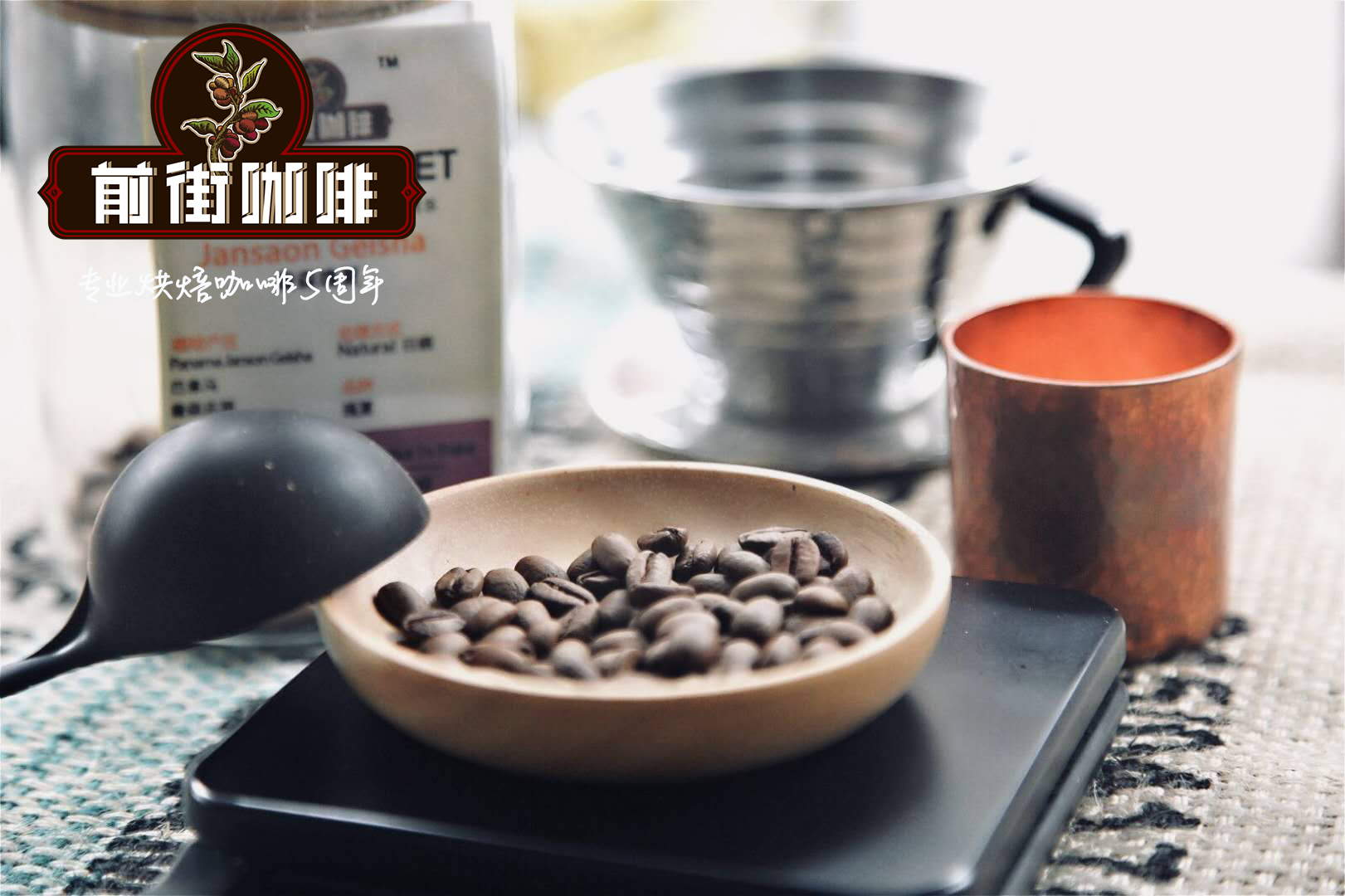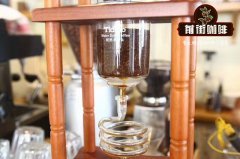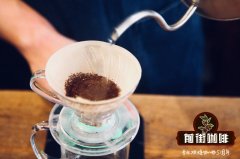Introduction of the main coffee producing countries in Africa _ the best coffee beans in Africa _ how to drink African coffee powder

Professional coffee knowledge exchange more coffee bean information please follow the coffee workshop (Wechat official account cafe_style)
Introduction of countries in major coffee producing areas in Africa:
Yemen (Yemen)
Famous representative coffee: mocha Matari (Mocha Mattari)
In the early days, Yemeni coffee was mainly exported from the port of Mocha, so the coffee exported from here later took Mocha as its name. In Yemeni coffee, Mattari and Sanani are more famous, of which Matari tastes full-bodied, with strong acidity and cocoa flavor, while Sanani has a more balanced taste and aroma. The coffee beans produced in Yemen belong to Arabica. Generally speaking, mocha beans are smaller than ordinary coffee beans and look very different from other coffee beans with large particles. However, although small, it contains distinct features, especially the distinct fruit acid is often used as a flavor enhancement role in mixed coffee, no wonder it is compared to the red wine in coffee, the aroma and sour taste are particularly aftertaste. The name Mocha can be written in several ways, "Mocca", "Mocha", "Moka", "Mokha". Wait, but they all mean the same thing. Mocha beans are especially obvious in deep roasting because of their unique chocolate flavor, so there is a fancy coffee flavored with chocolate sauce and named after mocha coffee.
Ethiopia (Ethiopia)
Well-known representative coffee: Mocha Harra, Yirgacheffe
Across the Red Sea and opposite Yemen, Ethiopia is the first place in the world to find coffee trees in Arabica. Coffee is grown almost everywhere in the country. Among them, the eastern Highland Hara (Harra) produces the famous Haramoka, which has a special wine aroma and acidity, which is equivalent to the Yemeni mocha and is a high-quality coffee. Sidamo and Djimmah in the south are also well-known coffee producers, and the coffee produced is slightly different from that produced by Hara, with a refreshing sour taste and drupe aromas. In Sidamo, there is a community domain name called Yirgacheffe, whose coffee has very charming features, with the aroma of jasmine and lemon, and the special taste as sweet as honey, so it is famous all over the world. Why is the port of Mocha in the country of Yemen, but the coffee from Ethiopia is also called Mocha? That's because Ethiopian coffee was previously exported from the Yemeni port of Mocha, so it is also named after mocha and subdivided by different names of origin, such as Mokhara, Mokajima and so on. So it's the same mocha coffee, it could be from Yemen or it could be from Ethiopia.
C ô te d'Ivoire (Cote dancers / Ivory Coast)
Well-known representative coffee: none
C ô te d'Ivoire is a country in West Africa, next to Guinea and Liberia. C ô te d'Ivoire is a name translated from French, but it is C ô te d'Ivoire if it is literally translated by pronunciation. Under French rule, coffee, along with cocoa and palms, was grown heavily on the coast to stimulate exports, and by the 1960s coffee production had increased to make C ô te d'Ivoire the third largest coffee exporter after Brazil and Colombia. However, in recent years, due to the impact of climate, economy, aging and reduced production of coffee trees, its coffee production has not been prosperous in the past. Since C ô te d'Ivoire is also a major producer of coffee in Africa, why are we not familiar with Ivorian coffee? This is because Ivorian coffee is almost entirely robusta, with only a few experimental Arabica coffees. As mentioned earlier, because of its special taste and characteristics, Robusta coffee is mostly used for purposes such as mixed instant coffee or canned coffee, and is rarely consumed directly in the form of fine coffee. Therefore, it does not often appear in the coffee-producing countries that we often mention.
Malawi (Malawi)
Famous representative coffee: Malawi.
Malawi is a small country in southeastern Africa and a landlocked country not near the sea. most of its coffee is grown in the northern plateau, but the yield is not large. But although it is not near the sea, it can be seen on the map that there is a very large lake in the northeast. It is Lake Malawi, which is also the natural boundary between Malawi and its neighboring countries. Compared with Kenya, Malawian coffee also has considerable sweetness and aroma, while the sour taste is lower in another style. If the sour sound of Kenya is compared to the sour sound of Kenya, the sour sound of Malawi feels like the bass and mid-bass. The coffee grown in Malawi is Arabica and is treated by washing. It is the country's ninth largest export, accounting for only about 5% of the country's total exports. However, in particular, although the export volume is very limited, the mode of production and marketing of its coffee is for local people to set up their own production and marketing companies to be responsible for the production, processing and sale of coffee, rather than the distribution of coffee led by the government in Kenya. In this independent mode of operation, the quality of coffee in Malawi has been maintained at a considerable level, so it is also one of the most popular coffee for traders.
Zimbabwe (Zimbabwe)
Well-known representative coffee: Zimbabwe
As can be seen from the map, Zimbabwe is located in southern Africa and is a landlocked country not bordering the sea, with Mozambique on the right. Coffee was only grown in Zimbabwe at the beginning of the 20th century, mainly in the eastern plateau, which is treated by washing. Zimbabwe's coffee is similar to Kenya with strong acidity and fruity aroma, but unlike Kenya, it has a pepper-like flavor. The best coffee comes from Chipinge.
Tanzania (Tanzania)
Well-known representative coffee: Kilimanjaro
Tanzania is also located in eastern Africa, to the south of Kenya and to the east of the Indian Ocean, with a coastline as long as 1500 kilometers. Coffee is not the most important agriculture in Tanzania, mostly small-scale operations, the rest still export corn, cotton and other major agricultural products. Most of the coffee is grown on the slopes of the Kilimanjaro volcano in northern Tanzania, near Kenya. About 70% of the coffee is Arabica, which is treated by washing, while the remaining 30% of Robusta are treated by the sun. The Creamanjaro coffee produced here is generally highly acidic, but slightly weaker than that of Kenya, and its taste is similar to that of Kenya, with a rich texture and a strong sweet aroma.
Kenya (Kenya)
Well-known representative coffee: Kenya AA
Kenya is located in East Africa, on the equator, the Indian Ocean to the east, Ethiopia to the north and Tanzania to the south. Kenyan coffee is characterized by obvious fruit aromas and acidity, with a hint of wine in the full-bodied taste. Kenyan coffee is mostly grown in the southwestern and eastern plateau areas, all Arabica varieties, and all washed coffee, there are four common varieties: Bourbon, Typica, Kents and Riuri 11. The bright fruit aroma and acidity of Kenyan coffee in shallow roasting is regarded as like fruit tea, which shows its unique flavor. Among them, the well-known Kenyan AA is full of particles and rich in taste, which is well received by the world.
Recommendation of African coffee bean brand
African coffee beans baked in front street coffee: Ethiopian coffee beans, Kenyan coffee beans, Burundian coffee beans and so on are fully guaranteed in terms of brand and quality. And more importantly, the performance-to-price ratio is extremely high, a pack of half a pound 227 grams, the price is only 80-90 yuan. According to the calculation of 15 grams of powder per cup of hand-brewed coffee, 15 cups of coffee can be made in a bag, and each cup of coffee costs only about 6 yuan, which is very cost-effective for coffee shops to sell dozens of yuan a cup.
Qianjie coffee: Guangzhou bakery, the store is small but a variety of beans, you can find a variety of unknown beans, but also provide online store services. Https://shop104210103.taobao.com
Important Notice :
前街咖啡 FrontStreet Coffee has moved to new addredd:
FrontStreet Coffee Address: 315,Donghua East Road,GuangZhou
Tel:020 38364473
- Prev

[African Coffee] what are the best coffee brands in Africa
Professional coffee knowledge exchange more coffee bean information please follow the coffee workshop (Wechat official account cafe_style) African coffee is mainly distributed in the East African plateau strip, north of Yemen, Ethiopia, then branches into the seaside Kenya, Tanzania, as well as the heart of Africa three small countries Uganda, Rwanda, Burundi, and finally to the southernmost Malawi, forming thousands
- Next

The first three African coffee beans-introduction to the famous producing areas of African coffee-reasons for the low price of African coffee beans
Professional coffee knowledge exchange more coffee bean information please follow the coffee workshop (Wechat official account cafe_style) for thousands of miles away in Africa, what will you think of? A hungry child with a big belly? Wild animals running on the prairie? Our imagination of Africa is actually very one-sided and unitary. One Africa, multiple gazes. Famous coffee producing area in Africa: Cotti
Related
- Does Rose Summer choose Blue, Green or Red? Detailed explanation of Rose Summer Coffee plots and Classification in Panamanian Jade Manor
- What is the difference between the origin, producing area, processing plant, cooperative and manor of coffee beans?
- How fine does the espresso powder fit? how to grind the espresso?
- Sca coffee roasting degree color card coffee roasting degree 8 roasting color values what do you mean?
- The practice of lattes: how to make lattes at home
- Introduction to Indonesian Fine Coffee beans-- Java Coffee producing area of Indonesian Arabica Coffee
- How much will the flavor of light and medium roasted rose summer be expressed? What baking level is rose summer suitable for?
- Introduction to the characteristics of washing, sun-drying or wet-planing coffee commonly used in Mantenin, Indonesia
- Price characteristics of Arabica Coffee Bean Starbucks introduction to Manning Coffee Bean Taste producing area Variety Manor
- What is the authentic Yega flavor? What are the flavor characteristics of the really excellent Yejasuffi coffee beans?

